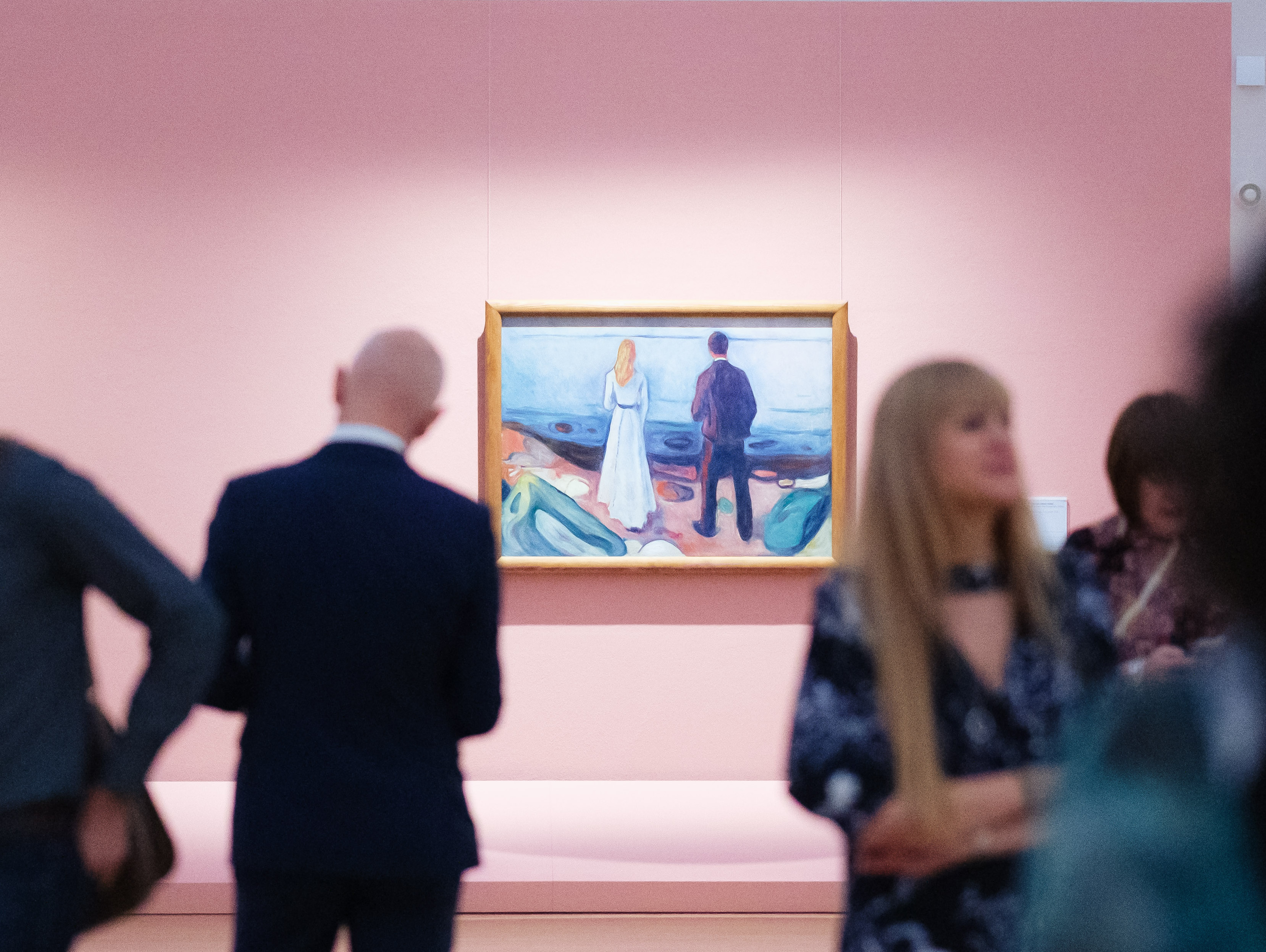On 9 August, the exhibition Edvard Munch. Fear opened at the Kunstsammlungen Chemnitz-Kunstsammlungen am Theaterplatz. The Norwegian artist's paintings on the themes of fear and loneliness enter into a dialogue with works by artists such as Max Klinger and Egon Schiele, Monica Bonvicini, Marina Abramović and Neo Rauch. We spoke to the curator Diana Kopka.
The exhibition opened a few weeks ago. What is the initial feedback from visitors?
The main feedback is, of course, that many visitors come and want to see the exhibition - that makes us very happy. The mood after the tour is consistently positive. The goodwill about the successful exhibition is clear, sometimes even superlatives are used in the judgement. But I am also particularly touched by the quieter moments. For example, I briefly listened to a conversation on the long bench on the theatre square: after the tour, a mother and son sat there and talked about their personal fears.
What is the connection between the Norwegian Edvard Munch and Chemnitz?
edvard Munch visited Chemnitz in 1905. The textile manufacturers Johanna and Herbert Eugen Esche had invited him to paint portraits for their Art Nouveau villa in Parkstraße. in 1926, Munch met with the director of the municipal art collections and signed the guest book in Chemnitz. Between 1906 and 1929, there were six exhibitions of works by the Norwegian master. Works were donated or purchased for the collection over the years, including the painting "Two People. The Lonely Ones", which had to be resold in 1937 due to the political power relations of the Nazi era. After almost 90 years, it is back in the exhibition on loan from the Harvard Art Museum/Busch-Reisinger Museum and is presented on our poster, as it was in 1929, to thematise loneliness. The exhibition tells of these and other connections, such as when Karl Schmidt-Rottluff travelled to Norway.
The exhibition is subtitled "Fear". It is dedicated to a feeling that most people prefer to avoid. Was Munch an expert on fear?
First and foremost, Edvard Munch was a man who loved, lived and felt pain. Everyone knows the feeling: fear of failure, fear for loved ones, fear of illness, fear for the future, but also loneliness and jealousy. Munch's works touch us through their visual language and connect with the experiences and fears of the viewer. Edvard Munch wrote: "In my art I have tried to explain life and its meaning to myself. I also intended to help others understand their own lives." He certainly became an expert on fear through his own experiences and his turn to art, whether voluntarily or involuntarily, who knows.
You address various art-historical approaches to fear. Are we afraid differently today than we were 100 years ago?
Fear is an intense, usually very vague feeling. Fear, on the other hand, is a concrete reaction to a real threat. In the exhibition, we are showing the work "Break it/Fix it" by Monica Bonvicini and Sam Durant, which plays with the very idea of running up against the limits of language. It is also about the top-down view of fear. What is important here, and this applies to fear in general - whether 100 years ago or today - is to communicate with others and name your worries and fears. If you act out of fear, it is usually a bad counsellor.
In addition to Edvard Munch, you are showing the work of numerous other artists. The works by Munch hang alongside works by Neo Rauch, Marina Abramović, Egon Schiele and others. How did you make your selection?
We deliberately included the works of these artists in the exhibition because the themes of fear and loneliness are vividly expressed in them. In addition, you can also discover works by Chemnitz artists such as Irene Bösch, Georg Dick, Michael Morgner, Osmar Osten, Steffen Volmer and Maja Wunsch, whose artistic work on these themes is still unseen in some cases. Many visitors react with amazement to the two works by Lenka Falušiová, in whose forest paintings many facets can be discovered. In short, we didn't want to scare visitors with contemporary art, but rather entice them to discover it.
Guests can not only visit the exhibition, but also take part in numerous events organised around it. What are your insider tips?
I'm particularly looking forward to the lecture "Laughter and Fear" by Carmen Goglin (8 October, 18:30), the musical reading "Mr G. is Afraid" (1 October, 18:30) with the author Torsten Glotzmann and the panel discussion "Fear and Loneliness" (15 October, 18:00). But my real insider tip lies in the past, it was the workshop "Screaming - but the right way".
Further information on the exhibition Edvard Munch. Fear can be found here.
